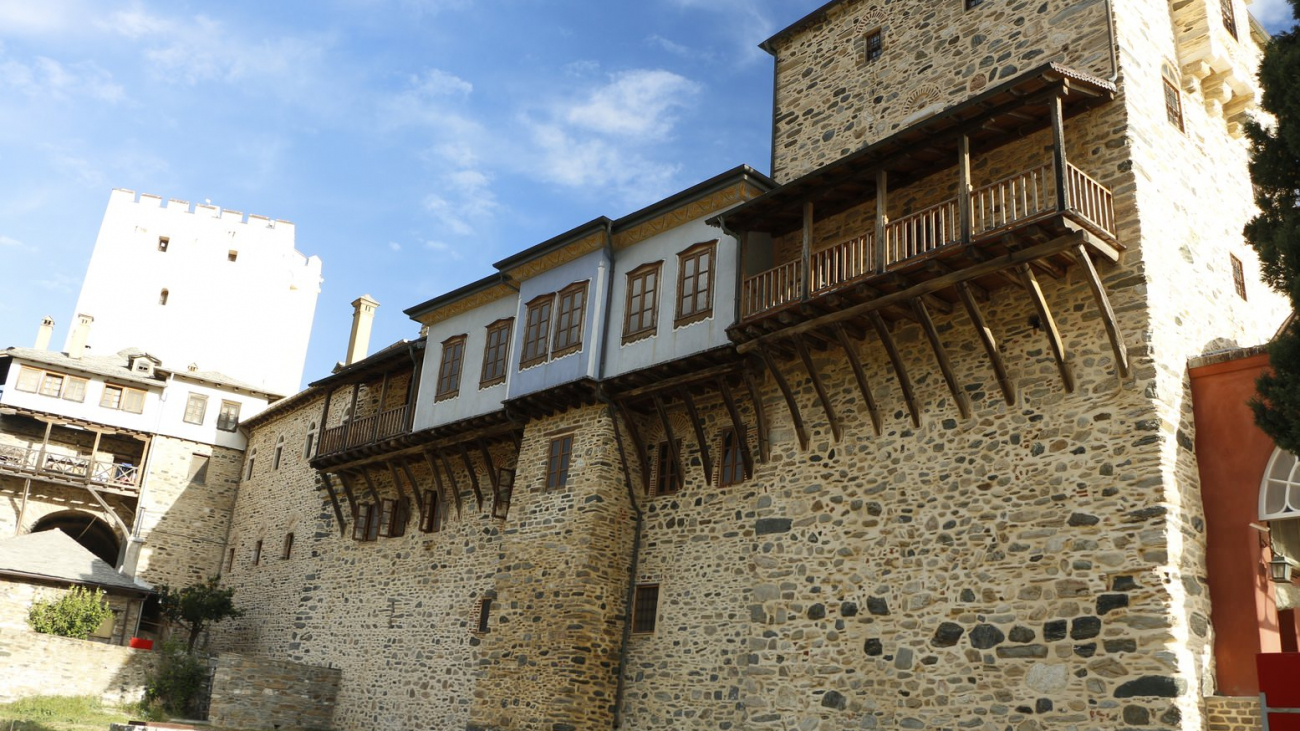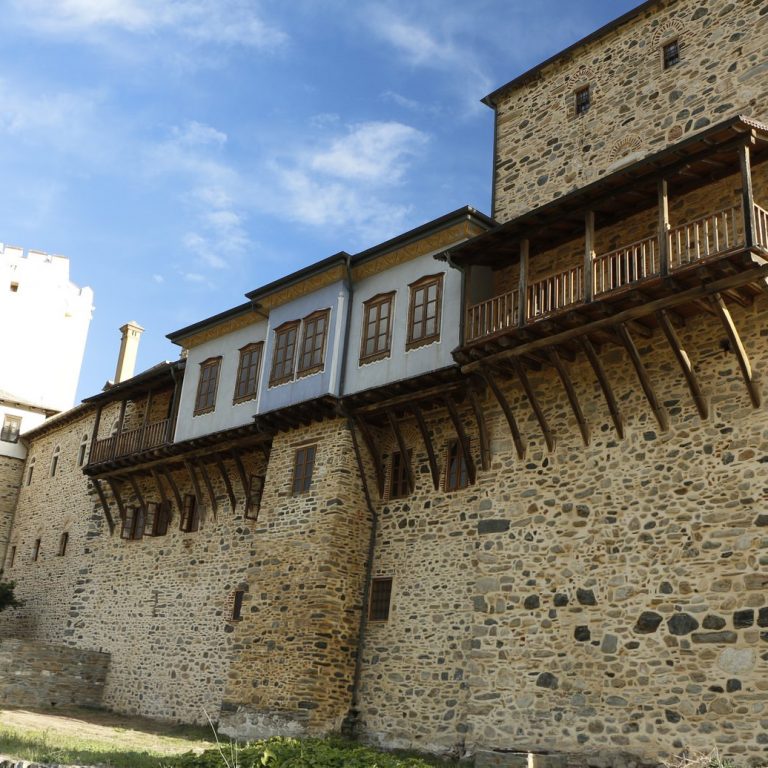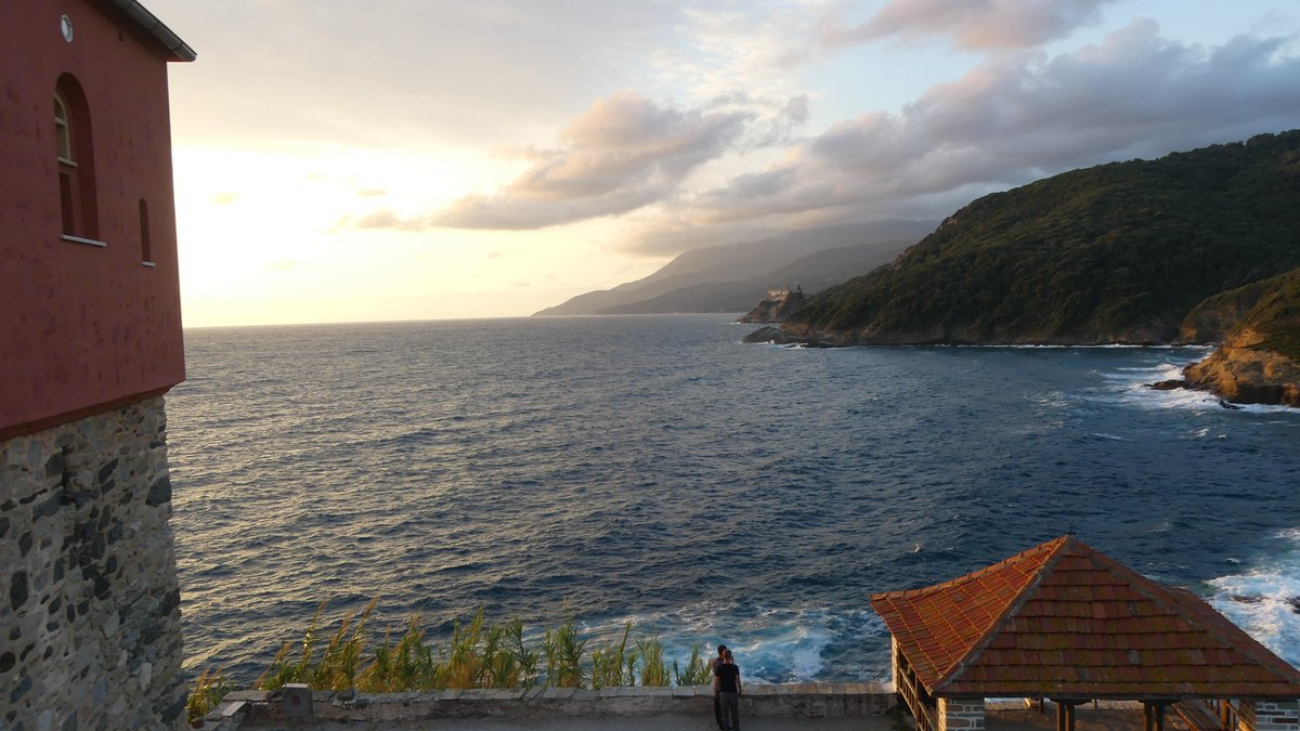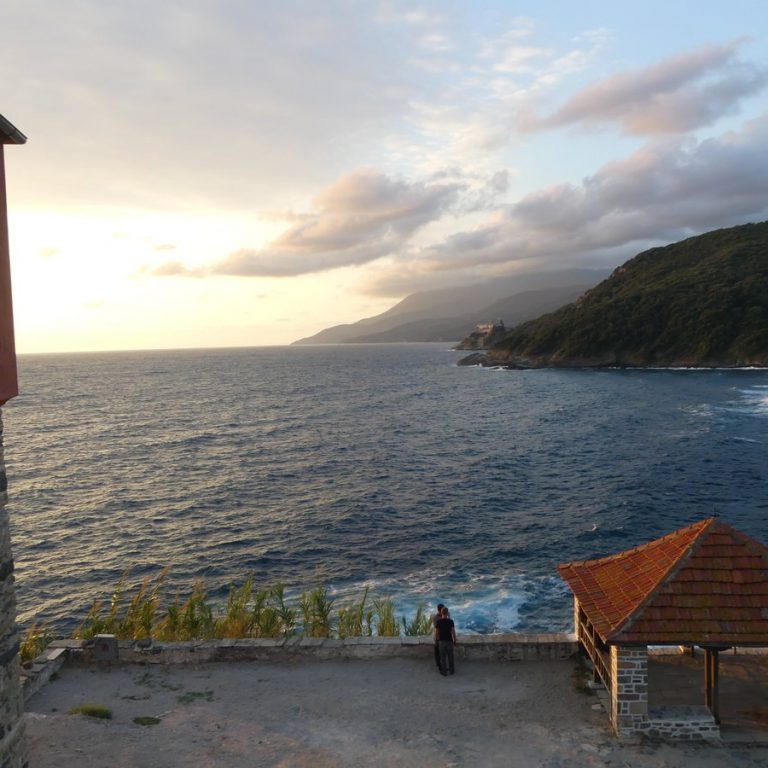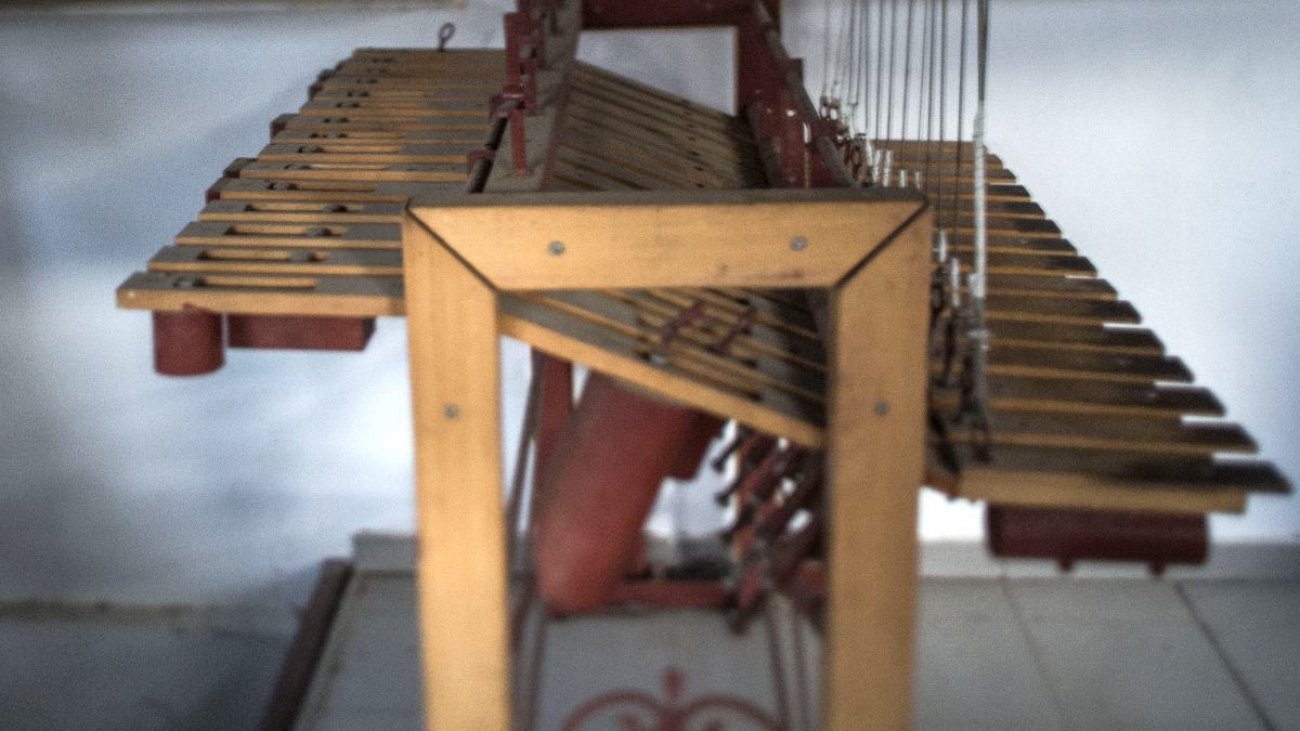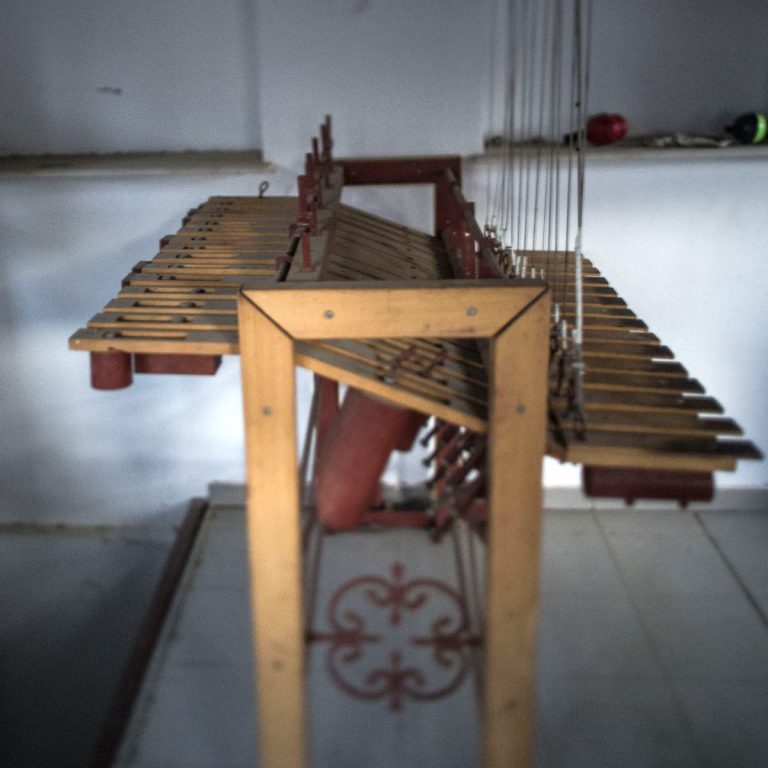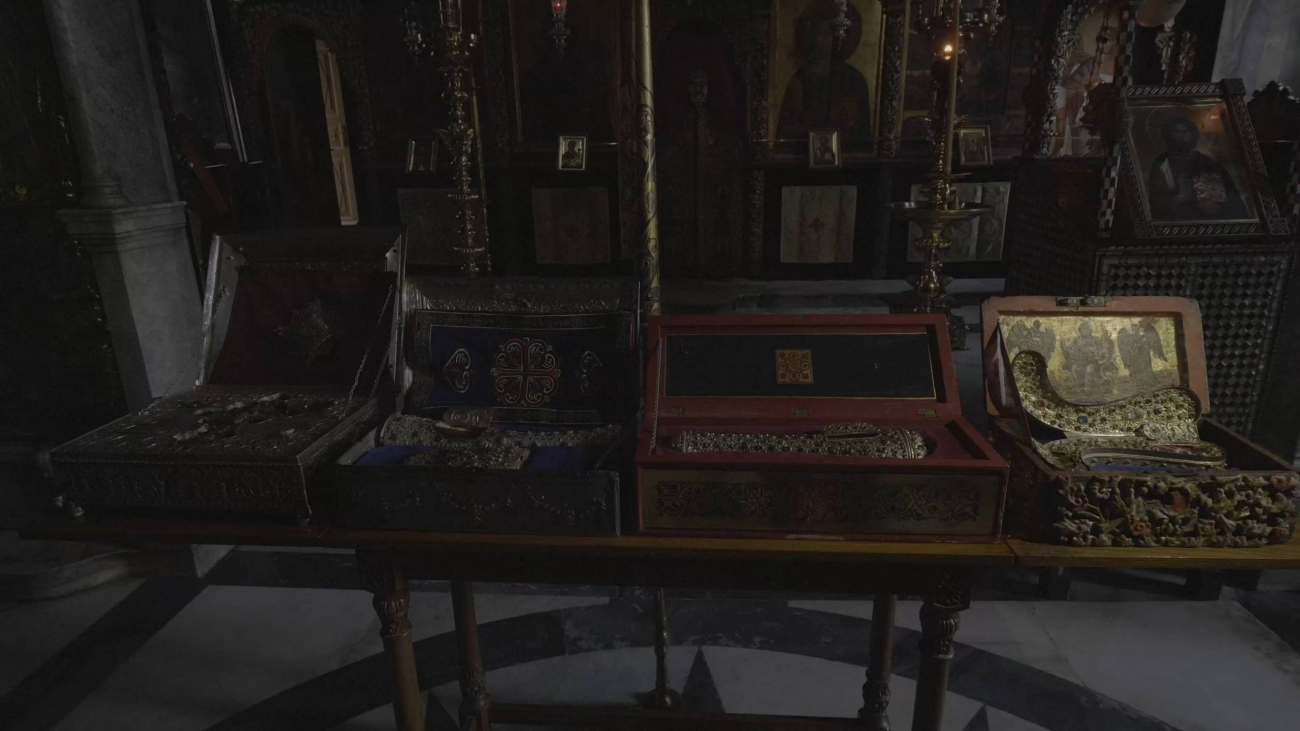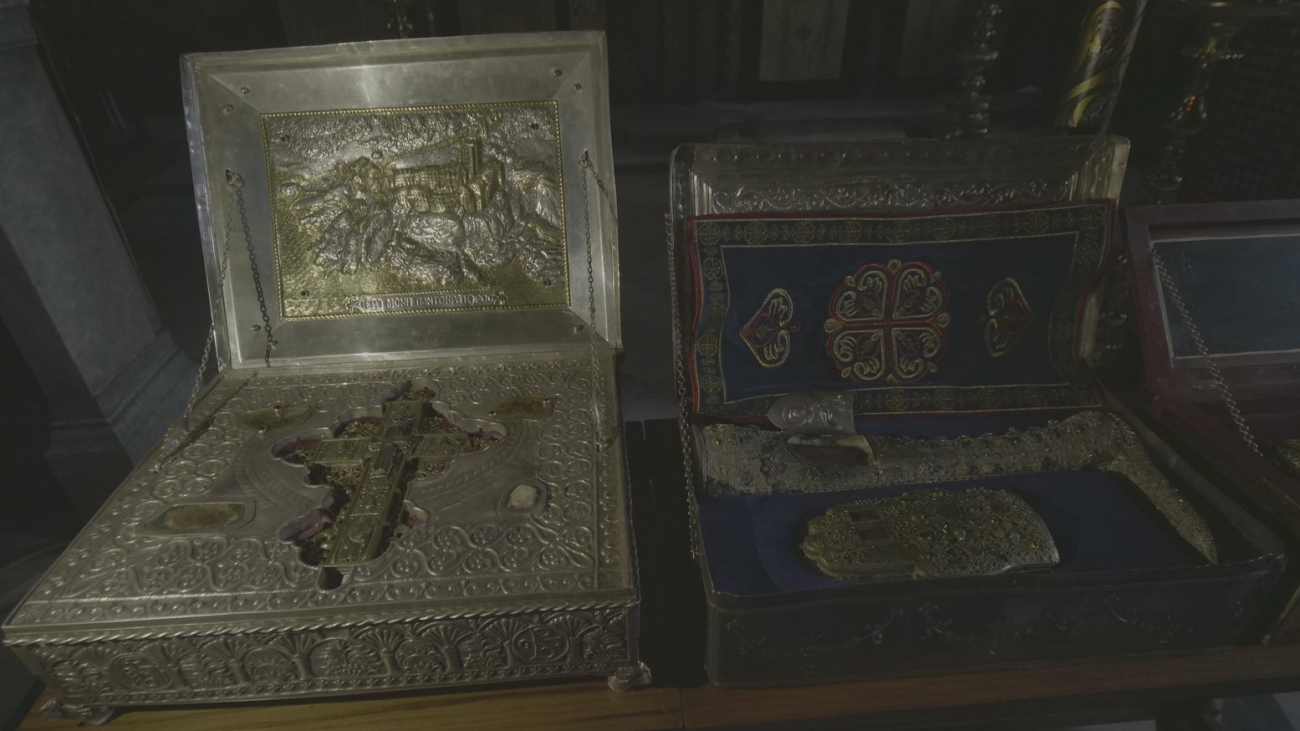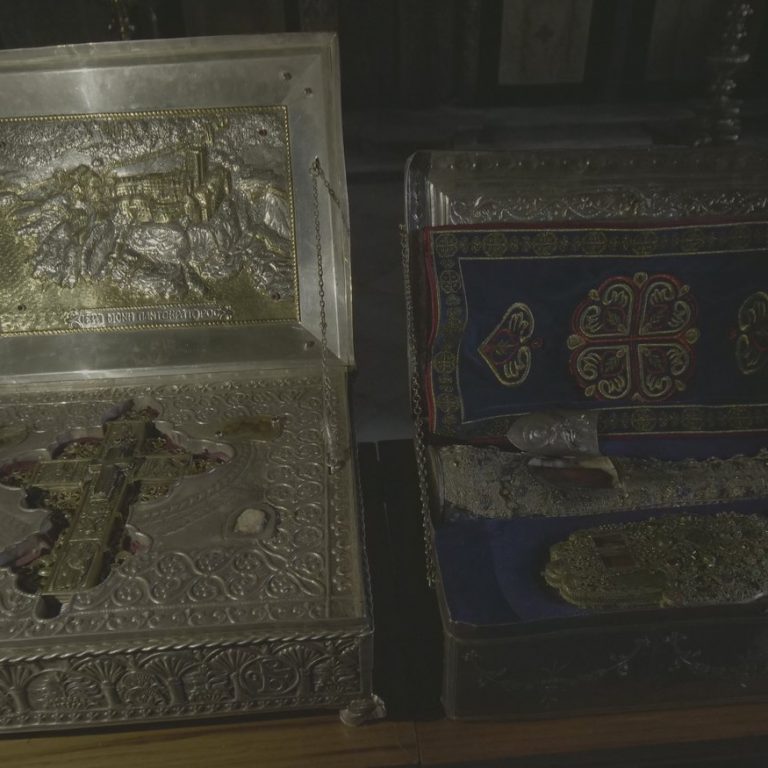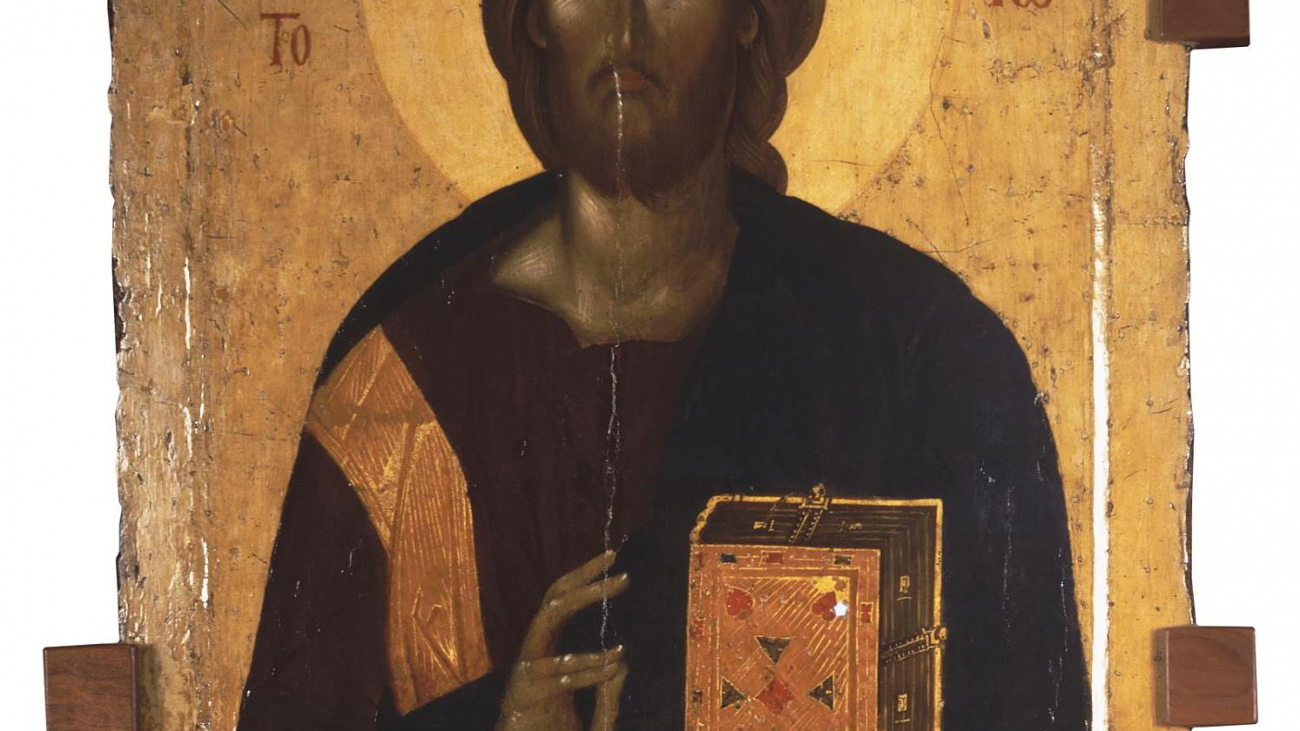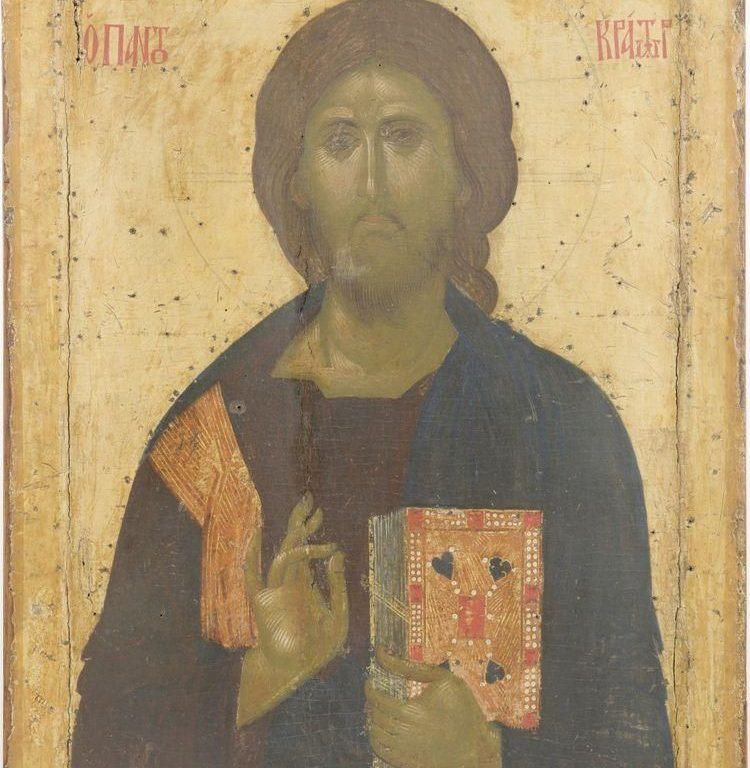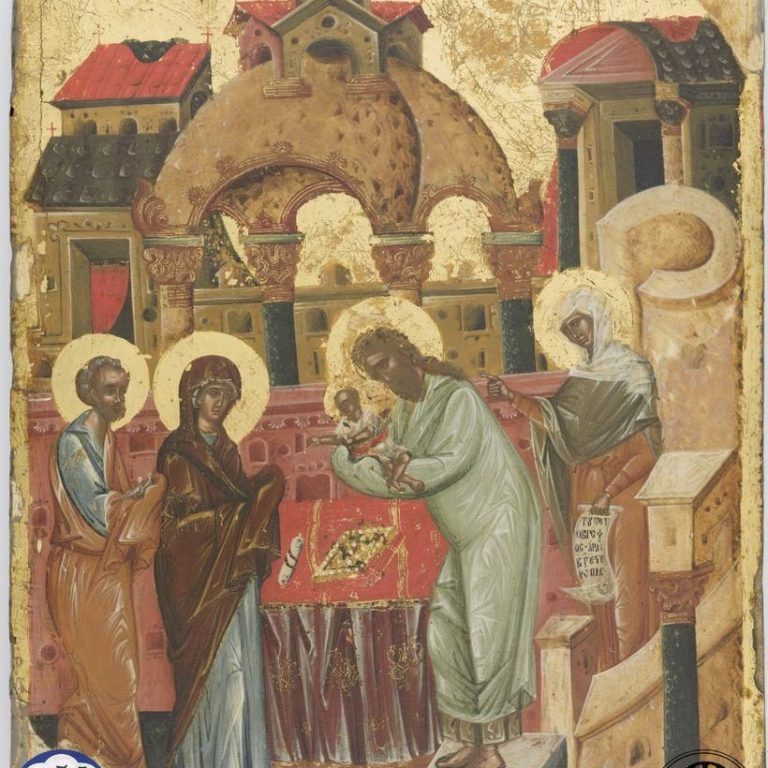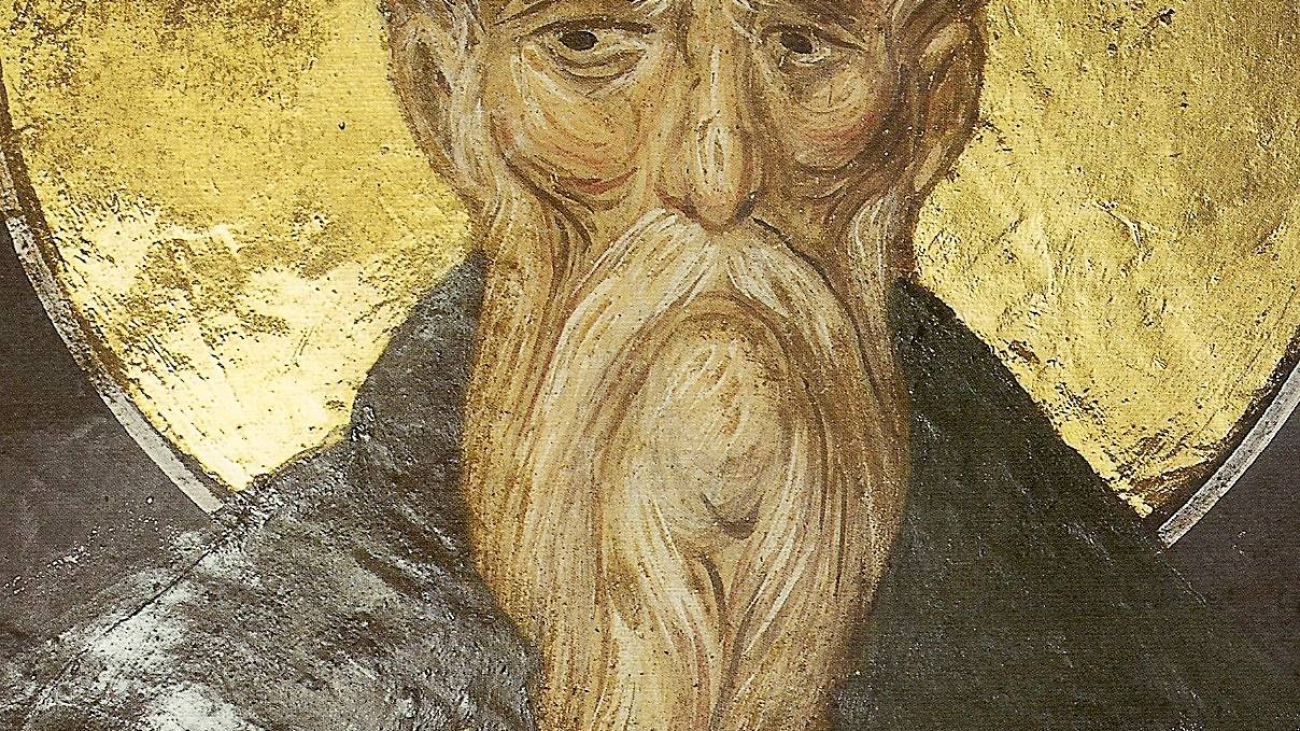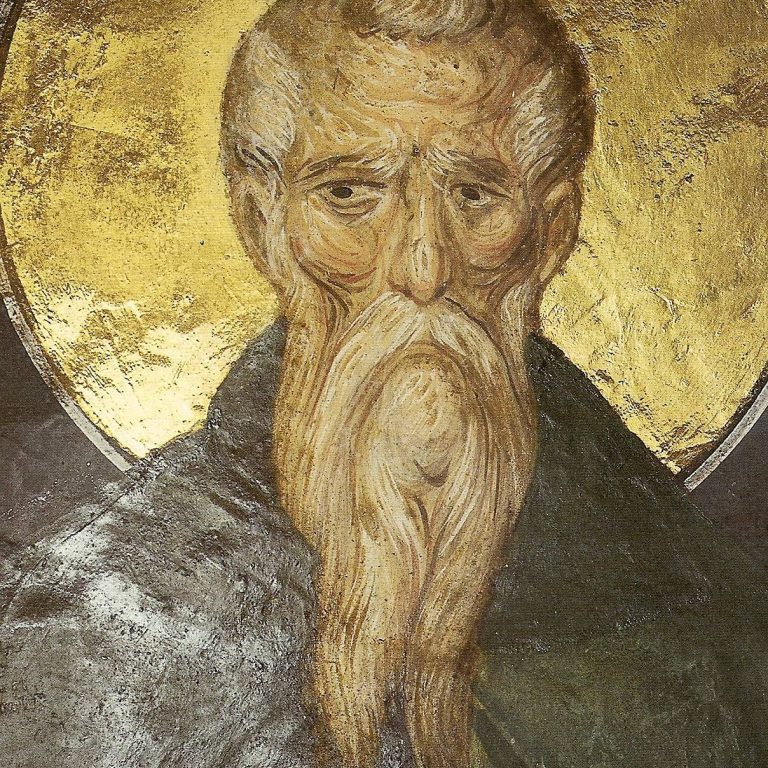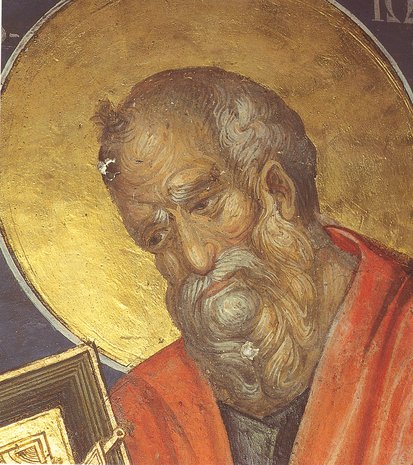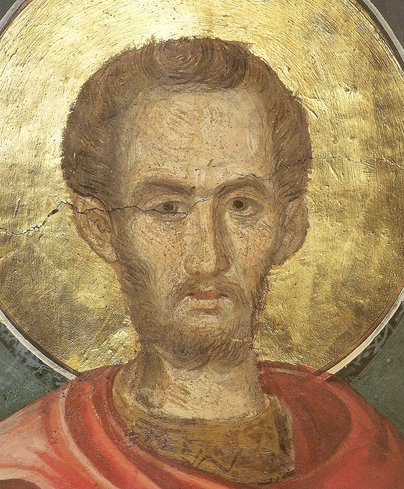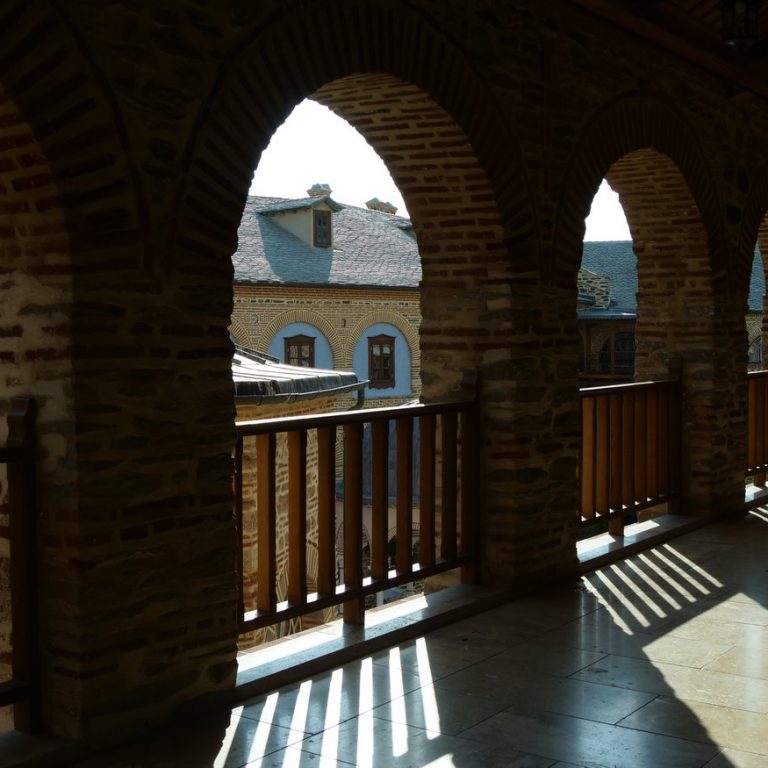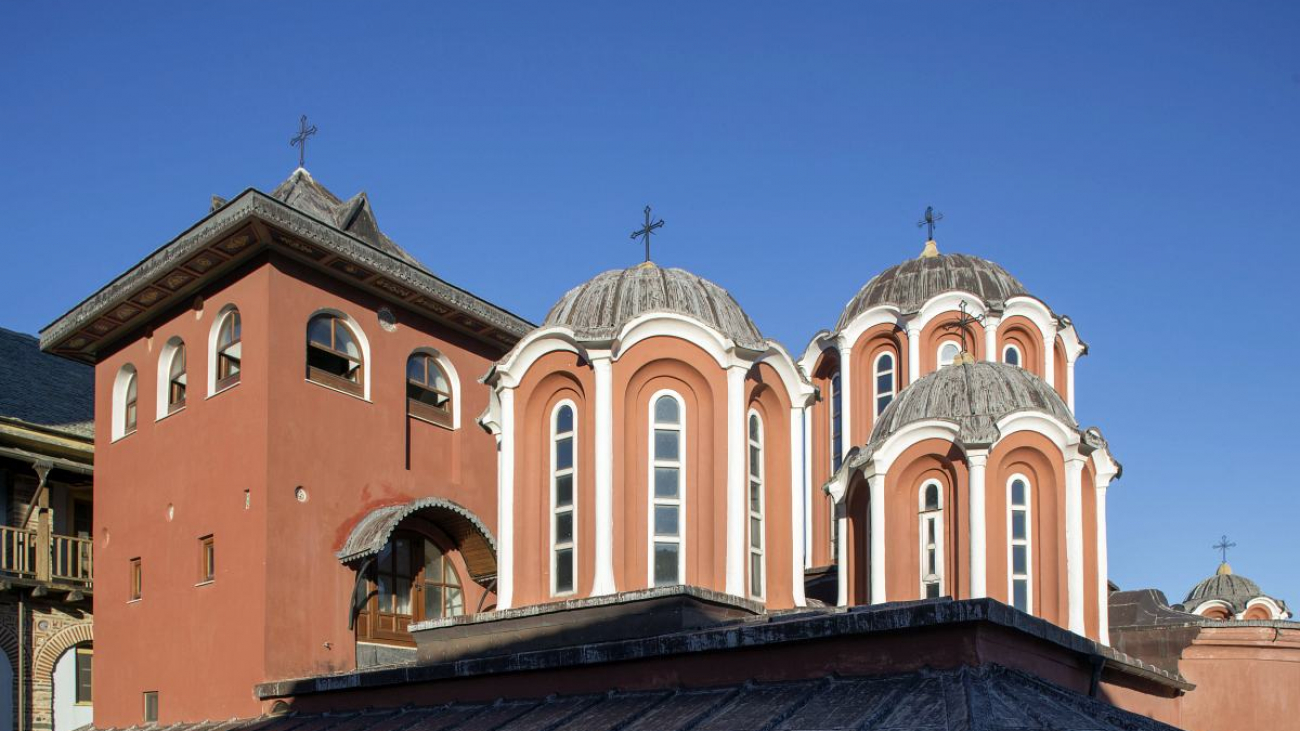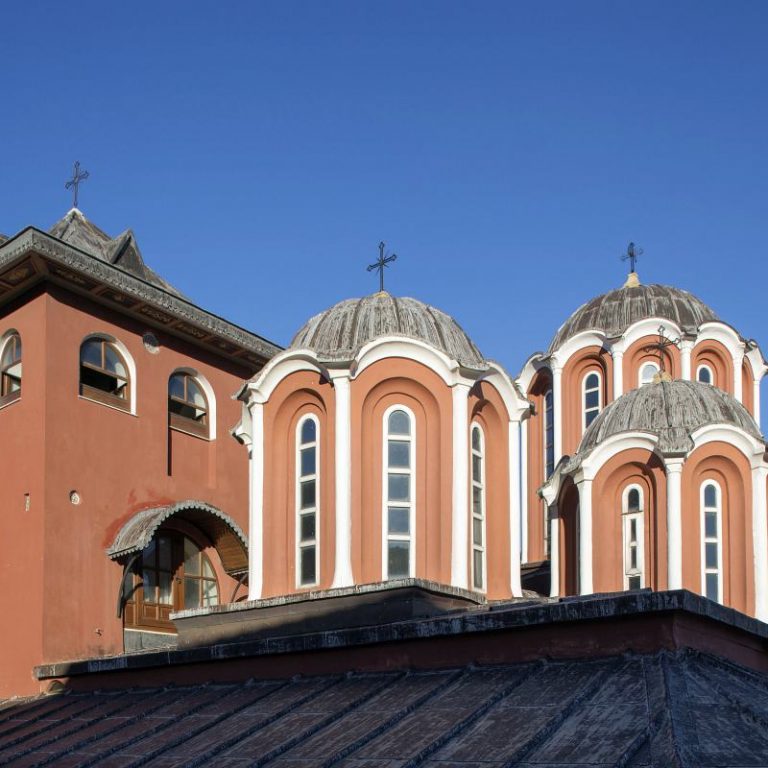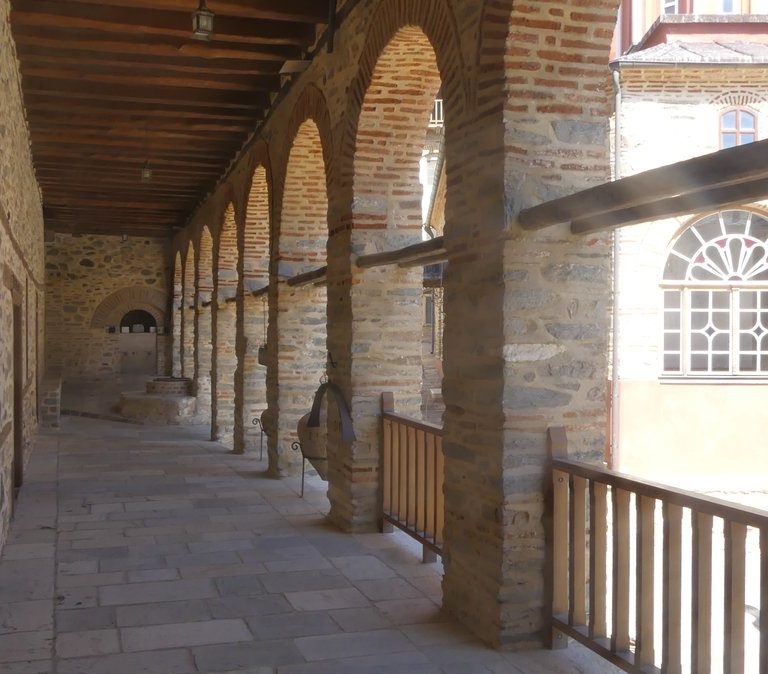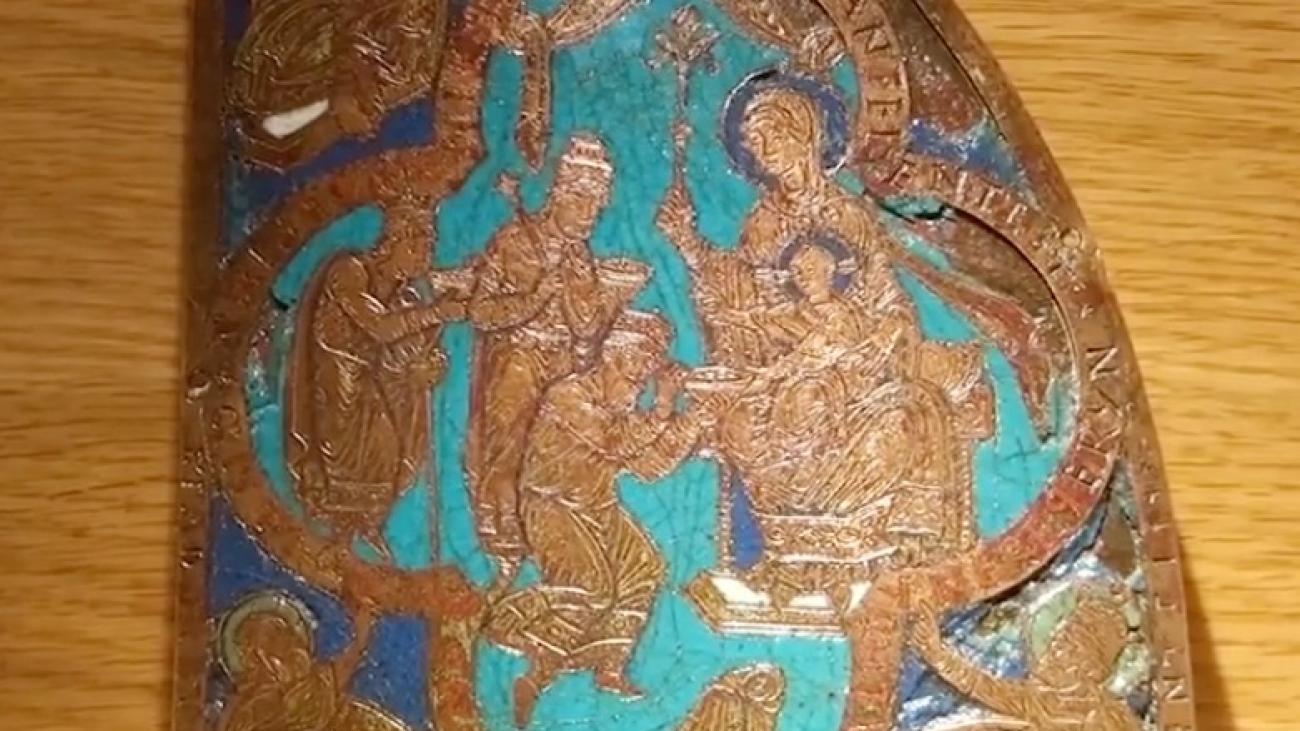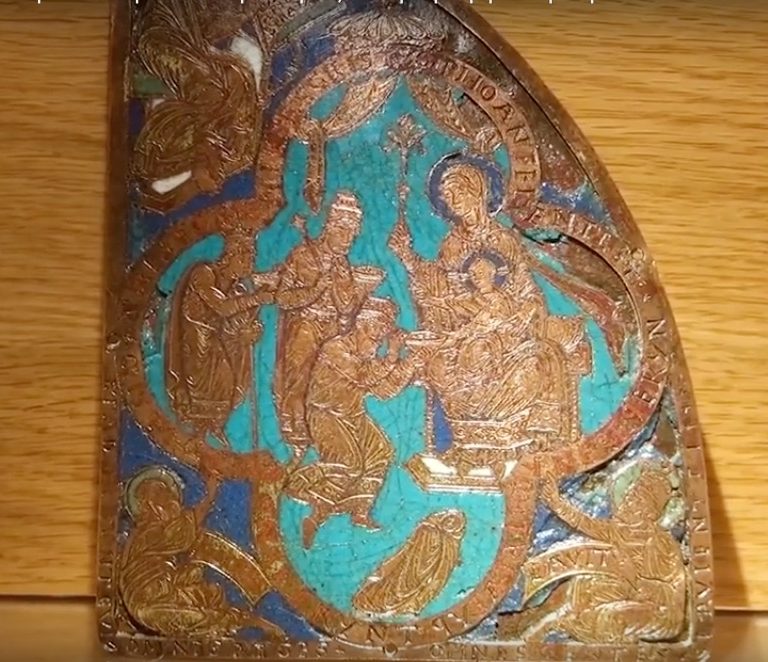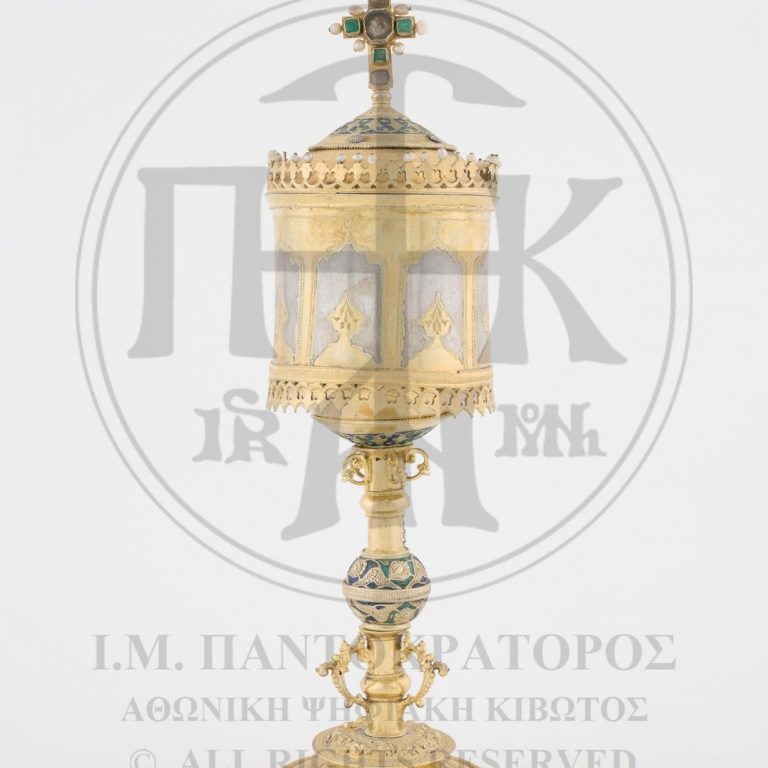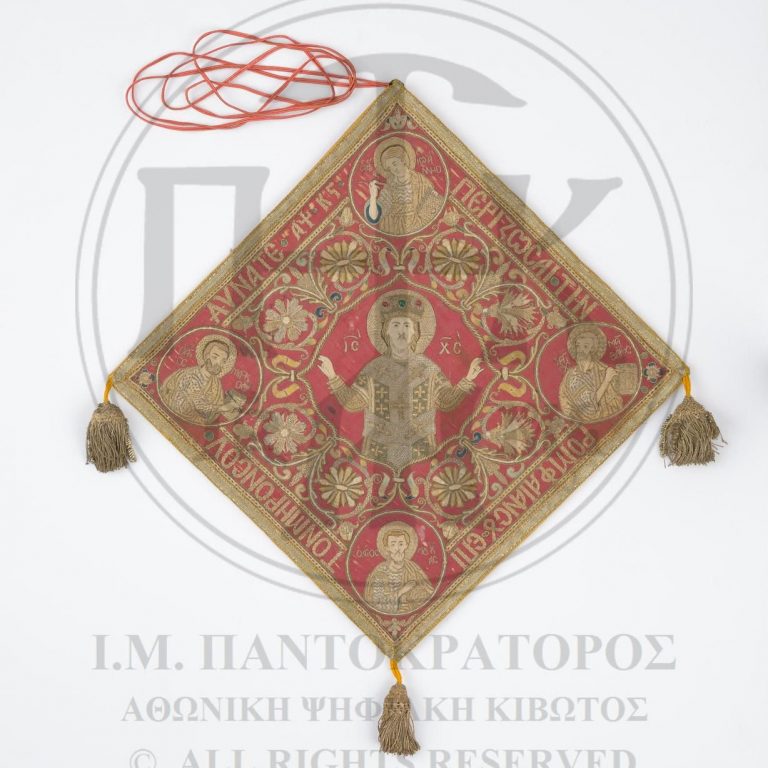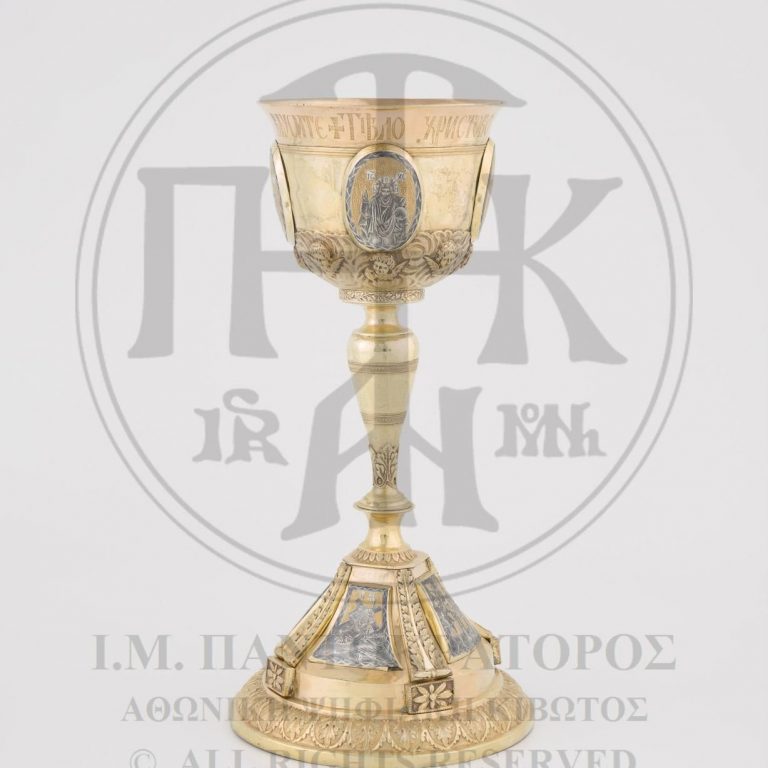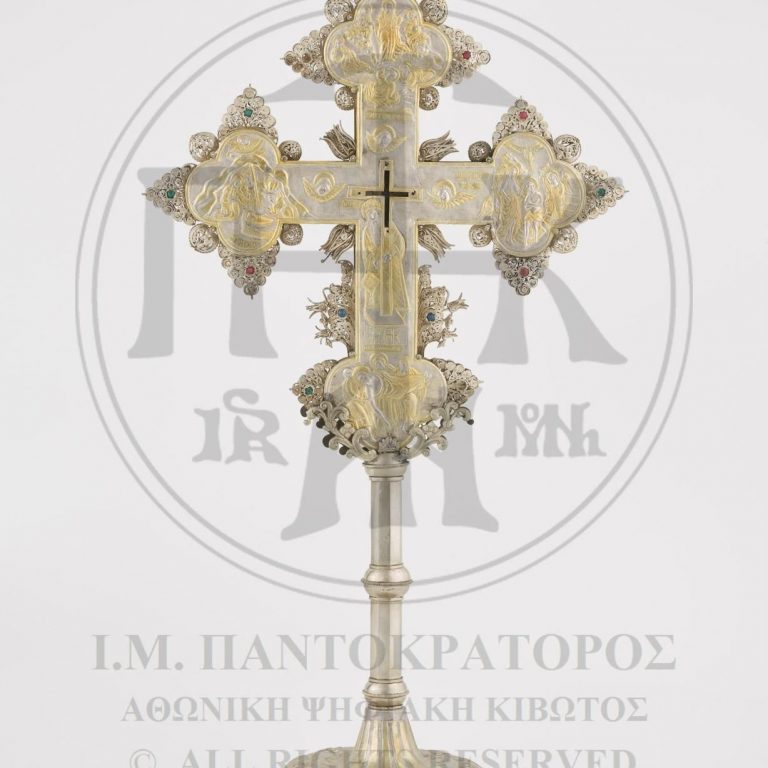The Icons Οf Τhe Virgin Mary
The Monastery houses as a precious treasure the important miraculous icon of Panagia Gerontissa, the largest icon of the Virgin Mary on Agios Oros, which depicts her in full length, in a position of pity, and is set into a marble shrine in front of the left area of the cathedral. The icon is theorized, according to the tradition of the Monastery, to be the gift of the Emperor Alexios I Komninos, and today it is embellished with a silver covering, which was made in the beginning of the 19th century. The title Gerontissa relates to a miraculous intervention by the Virgin on behalf of a virtuous Prior of the Monastery who was near death, while other miracles have also been passed down in the Athonite tradition and concern both the operation of the Monastery as well as the care of the Virgin for her monks (e.g. the miracle of the olive oil, etc.)
Moreover, the tradition is included exactly as it is recounted in the tradition in the A Narrative relating to the miraculous icon of the Virgin Mary which is called Gerontissa, from the work, The outstanding hallmarks of Mt Athos (Konstantinople 1861):
'This Holy Icon is installed today within the Cathedral, upon the eastern column of the left side; in the past, it was not found in the Sanctuary. At that time, there was in the Monastery a Prior, virtuous and advanced in age, who was ill and knew that the time of his death was approaching. He wished to participate in the sacred liturgy and asked the heiromonk conducting the service to proceed quickly so that he would be able to complete his worship. The hieromonk continued as before, when suddenly a voice coming from the icon of the Virgin Mary told him to comply with the elderly Prior's request. Since that time, the icon has been referred to as Panagia Gerontissa.
The full body of the Virgin Mary is depicted in this icon, which has been conserved and embellished with a silver facing. And on the silver facing, a pithos [a ceramic olive oil storage vessel] has been included, to bear witness to the miraculous intervention of the Virgin by filling the empty oil jars [to feed the monks]. After a raid by the Saracens, this holy icon had been thrown into a well near the monastery, where it was later recovered with the help of a family member of the Saracens, who was ashamed by their bold and sacrilegious action.
[According to the tradition], an ill-fated barbarian wanted, out of foolish pride, to destroy a heirloom of Christianity, and decided to cut the icon into pieces and burn it to light his pipe. He was immediately struck blind because of his arrogance, and the icon remained in the well for 80 years. This barbarian, who had justly been punished, was broken in spirit, full of anguish and remorse for this terrible act, and hoping to receive some relief and comfort from this terrible suffering for an action he truly regretted, ordered his family to go to Agios Oros after his death and to recover the icon which he and his comrades had thrown into the well. Thus, the relatives of this repentant barbarian followed his orders and went to Agios Oros, where they showed the local people where the icon was, and they left honorably. This is the same tradition of the Monastery relating to this miraculous icon.'
In the cathedral of the Monastery today, the miraculous icon of St Georgios of Faneromenos, from the Pantokratorian Cell which is connected with this miracle, is enshrined. According to tradition, St Georgios saved the monks of the Cell from a pirate raid by a divine intervention.
Moreover, the tradition is included exactly as it is recounted in the tradition in the A Narrative relating to the miraculous icon of the Virgin Mary which is called Gerontissa, from the work, The outstanding hallmarks of Mt Athos (Konstantinople 1861):
'This Holy Icon is installed today within the Cathedral, upon the eastern column of the left side; in the past, it was not found in the Sanctuary. At that time, there was in the Monastery a Prior, virtuous and advanced in age, who was ill and knew that the time of his death was approaching. He wished to participate in the sacred liturgy and asked the heiromonk conducting the service to proceed quickly so that he would be able to complete his worship. The hieromonk continued as before, when suddenly a voice coming from the icon of the Virgin Mary told him to comply with the elderly Prior's request. Since that time, the icon has been referred to as Panagia Gerontissa.
The full body of the Virgin Mary is depicted in this icon, which has been conserved and embellished with a silver facing. And on the silver facing, a pithos [a ceramic olive oil storage vessel] has been included, to bear witness to the miraculous intervention of the Virgin by filling the empty oil jars [to feed the monks]. After a raid by the Saracens, this holy icon had been thrown into a well near the monastery, where it was later recovered with the help of a family member of the Saracens, who was ashamed by their bold and sacrilegious action.
[According to the tradition], an ill-fated barbarian wanted, out of foolish pride, to destroy a heirloom of Christianity, and decided to cut the icon into pieces and burn it to light his pipe. He was immediately struck blind because of his arrogance, and the icon remained in the well for 80 years. This barbarian, who had justly been punished, was broken in spirit, full of anguish and remorse for this terrible act, and hoping to receive some relief and comfort from this terrible suffering for an action he truly regretted, ordered his family to go to Agios Oros after his death and to recover the icon which he and his comrades had thrown into the well. Thus, the relatives of this repentant barbarian followed his orders and went to Agios Oros, where they showed the local people where the icon was, and they left honorably. This is the same tradition of the Monastery relating to this miraculous icon.'
In the cathedral of the Monastery today, the miraculous icon of St Georgios of Faneromenos, from the Pantokratorian Cell which is connected with this miracle, is enshrined. According to tradition, St Georgios saved the monks of the Cell from a pirate raid by a divine intervention.

